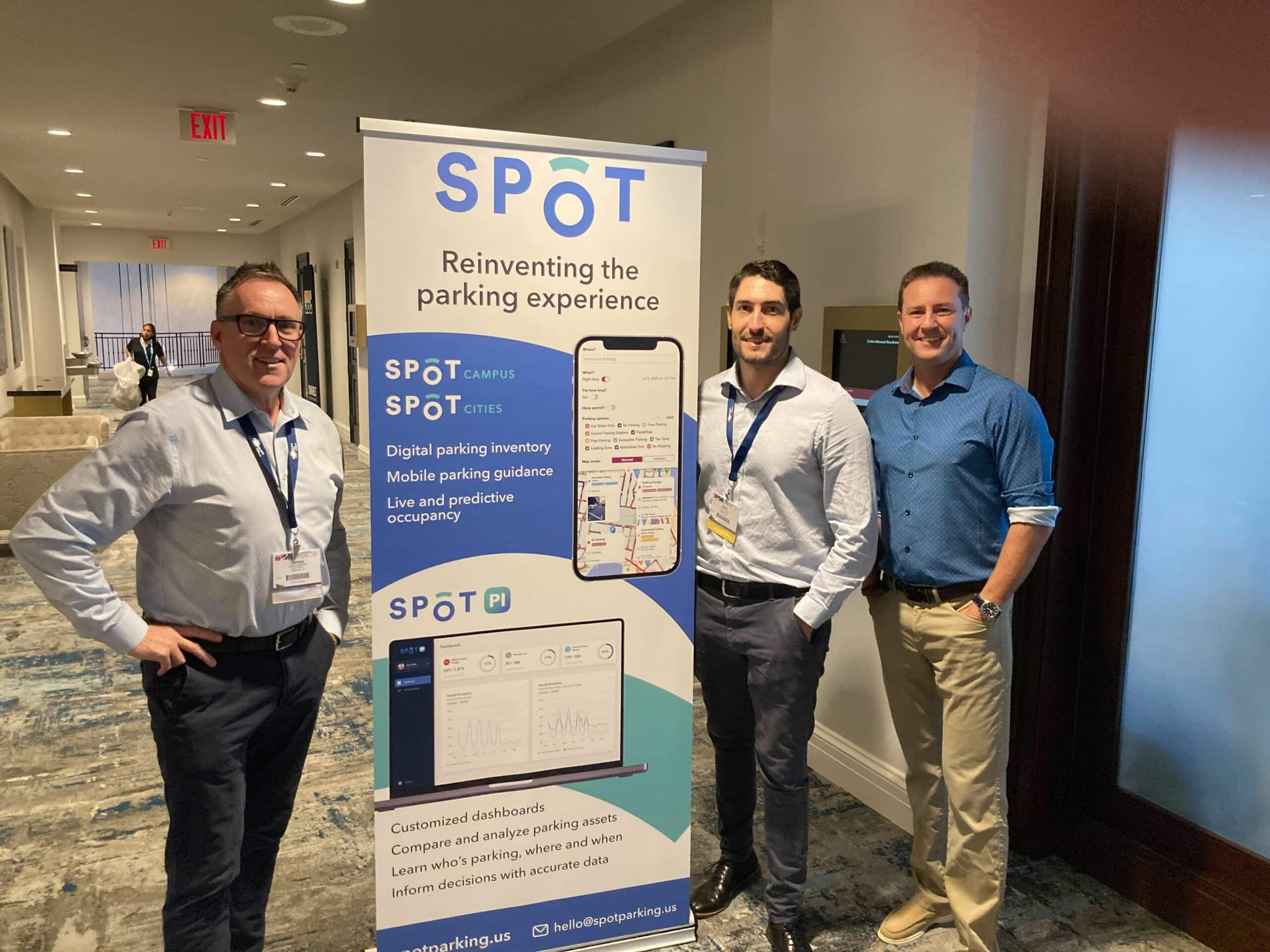Top Five Trends at IPMI 2022
By Mark Frumar and James Waddell
 After a successful 2022 IPMI Parking & Mobility Conference & Expo the Spot Parking team have shared their insights into five key trends they took away from this year’s conference.
After a successful 2022 IPMI Parking & Mobility Conference & Expo the Spot Parking team have shared their insights into five key trends they took away from this year’s conference.
- Technological innovation is back on the agenda for cities and universities.
After what feels like more than two years of hiatus, many cities and campuses have placed innovative parking technologies back on the agenda. There’s no doubt many budgets are still replenishing and organizations are still adapting, while the ‘wish lists’ around parking improvements for Transportation Directors continues to grow.
Some stand out sessions in our eyes were the Municipalities, Cities & Downtowns “Shoptalk” session moderated by Hooman Shahidi with EVPassport and the session “Better Sharing of Public Space and Improved Mobility Through Parking Management” led by Charles de la Chevrotiere from Montreal’s new sustainable mobility agency.
Sessions like these only reinforce how hungry parts of the industry are for new innovative technologies, especially when ‘going back to how things were’ would feel like a large step backwards in many cases. What’s that saying – through change comes innovation?
2. Administrators are reviewing their permit and payment models to ensure they match the post-covid consumer demand.
The switch to online learning and work-from-home options created during COVID-19 lockdowns has continued, as universities and corporate campuses experience ongoing hybrid arrangements.
Traditional parking permits that were sold according to monthly and semester attendance now require more flexibility, including daily permits, and part-time permits for both staff and faculty.
Parking administrators are reviewing not only their policies, price points, and asset utilization in light of this hybrid model, but they are also exploring new technologies to purchase on demand permits that also reflect accurate compliance and equity issues. The adaptation of contactless payment technology to meet the new permit model has been an interesting development, and has rapidly become the expectation from consumers post-COVID.
3. Understanding how parking assets are being used, through the use of effective parking data.
Accurate and effective parking data is emerging as a key requisite for asset owners who never really had the opportunity to understand their city’s assets at a granular level.
Thanks to some major technological advances, and aggregation of data within the industry supported by many years of testing, city leaders and Universities can now not only visually see how their assets are being used, they can also predict how they will be used. In 2022 and beyond, it’s vital for planning decisions to be supported by sound, accurate analysis of effective data. After all, a lot of this boils down to understanding, predicting and capturing human driving and transportation behaviors.
Thanks to Transportation Departments investing in the relevant technologies in areas such as curbside digitization (e.g. Spot Parking) and curb utilization tracking (e.g. Vade) for their cities’ future, this means city leaders have more tools in their toolbox enabling them to match the demand at the curb to the parking supply in a dynamic manner.
4. A need for occupancy and payment data aggregation.
Real-time occupancy for on-street parking in cities has been a challenge over the years. The use of in-ground and flush mounted sensors have been the predominant technology for real-time occupancy, but lately the use of AI and video analytics through existing or bespoke camera technology is gaining momentum.
Something that we’ve also seen is using payment data to approximate occupancy calculations. For instance, taking feeds from meters and pay-by-phone technologies – whilst not 100% accurate – can build up predictive models around curbside utilization without the expenditure on hardware such as sensors.
5. Cities that are looking to develop a one-stop Mobility App that reflects a live digital record of curbside assets that all road users can use to trip plan, including directions, availability and payments.
The trends in intelligent transport systems have focused on Mobility as a Service (MaaS) to offer vehicle drivers alternative transport options such as public transport, micro mobility (bikes and scooters etc), pedestrian, and shared or on-demand transport.
With all mobility data available in one app, people are increasingly making day-by-day choices from all available transportation modes, based on their daily needs. Among the modal choices we are continuing to see the use of personal vehicles as an essential cog in the mobility ecosystem wheel. This extends to parking of private vehicles whereby proximity to transport hubs, or safe last-mile transport options such as micro mobility vehicles or pedestrian access is becoming more important. Cities like Montreal are leading the “Smart City” push to aggregate multiple sources of mobility data into one source to allow residents and visitors to use real time data to plan a multimodal journey for their daily commute or personal trips, as we saw in New Orleans at IPMI 2022.
Mark Frumar is Spot Parking’s vice president of sales for Spot Parking, and James Waddell is Spot Parking’s director of operations.
